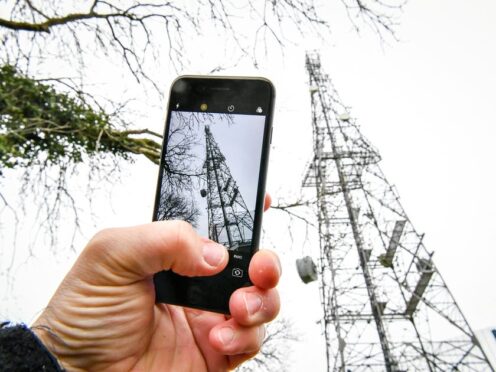More work needs to be done to ensure the UK has the mobile connectivity it needs now and in the future, according to a new report.
The Public Accounts Committee said that the pace required to meet the Government-set target of bringing 4G mobile coverage to 95% of the UK landmass by the end of 2025 was likely unsustainable.
In its report on the subject, the committee said in order to reach that target, progress would need to continue at the same rate as the past year, even though the remaining locations needing coverage will be harder to reach and connect.
It also noted that three of the four major mobile network operators have already advised the Department for Science, Innovation and Technology (DSIT) that they are unlikely to meet an Ofcom-set target of coverage for 88% of the UK landmass by the end of June this year.
Among a range of conclusions and recommendations, the committee said it had found that DSIT was not certain what the eventual cost of the programme would be, or which specific areas are in the 5% of the UK that will not have 4G.
It said that more detail was also needed on the specific benefits of bringing better mobile coverage to remote areas to help guide decisions on where investment is most needed, and a better system for tracking progress on the scheme to bring more connectivity to roads and premises was needed.
The plan to expand 4G coverage centres around the Shared Rural Network, a scheme that would see mobile operators sharing infrastructure – such as masts – in order to boost mobile signal in the countryside.
“The Government’s £501 million investment in the programme is subject to cost pressures, which combined with delivery challenges means installing new masts will cost more than expected,” the report says.
“The Department is not yet certain by how much the programme’s costs will rise as a result of these pressures, how much of any cost increase will be borne by the taxpayer and whether cost pressures will affect mobile network operators’ ability to achieve coverage targets.
“Furthermore, the Department has not confirmed which specific areas are in the 5% of the UK that will not have 4G connectivity, and it does not yet have a plan to ensure people in these areas are not left behind.
“It has not communicated to stakeholders how any gains from increased mobile connectivity translate into better outcomes for consumers and businesses, especially in areas with very low populations.
“Public reporting of mobile connectivity across the UK is not fit for purpose. Ofcom’s data for measuring connectivity often does not reflect people’s experience.
“People often experience worse coverage than reported because of local geography or building materials used within premises.
“The Department itself lacks information on whether mobile network operators are on track to meet targets to improve connectivity for road users and premises, and has insufficient data to judge whether connectivity on UK railways is improving.”
DSIT said the Shared Rural Network was on track to deliver against its objectives of 95% landmass coverage by at least one mobile operator by the end of 2025, and said coverage across the country had already risen since the scheme was launched in 2020.
